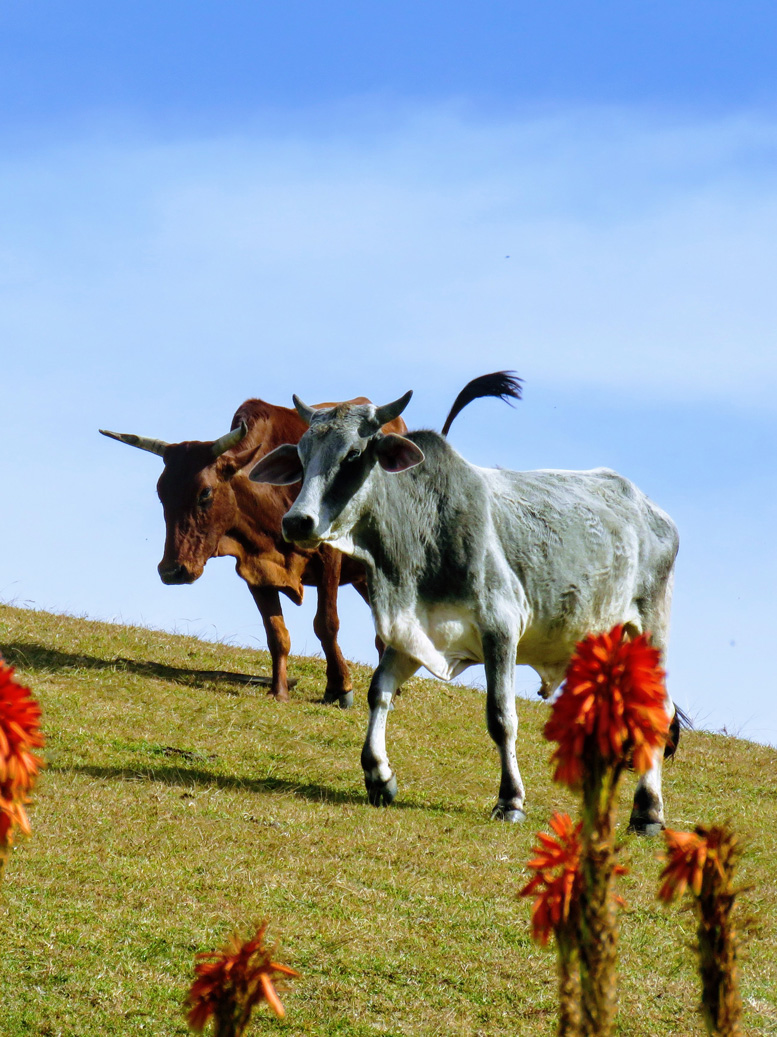By embarking on this programme there is a focus on food security and being able to put food on the table for themselves and their family, as well as their community.
We want to show them the benefit of growing their own food as an additional source of income. If they had dropped out of secondary schooling, English and Maths is a fundamental of the programme, which is greatly beneficial.
By providing Mixed Farming Systems skills – they will have the understanding, skills and competencies to plant crops and handle livestock.
Higher efficiency and diversity of products generated by mixed farming systems provides more and diversified food and nutritional security to rural households through healthy and affordable diets.
Increased incomes from sustainably intensified mixed farming systems, along with participation by rural households in multiple associated value chains, helps to generate jobs, reduce poverty, and improve livelihoods.
Redressing discriminatory norms and institutions in mixed farming systems results in enhanced and equitable livelihoods for women, youth, and other disadvantaged social groups through increased co-design of and benefits from innovations.


Youth Engagement in Agriculture
By Youth Power
Young men and women are engaged in the agri-food system in a variety of ways — through formal and informal wage work, unpaid family labour, self-employment, and cooperative membership — and across all levels of the value chain. Overall, youth earn “mixed livelihoods” from various sources — on-farm, off-farm, and non-farm — and with self-employment and migration playing particularly important roles. While there is some debate that youth are not attracted to agriculture and are leaving the sector, the evidence paints a nuanced picture. Some countries are indeed experiencing trends of youth turning away from agriculture and/or working fewer hours per week in agriculture than older age groups; however, the absolute numbers of youth who are dependent on farming or livestock production is likely to increase because of population growth. Primary data across multiple countries confirms that youth are not attracted to low-wage, low-value production, and are instead attracted to modernization/ new practices, use of technology, and opportunities for “quick money” with relatively higher earnings than staple crops. Youth decisions to engage in work are also shaped by the environment in which they live: the economic and political context, social norms and customs, the nature of the agri-food system, institutions, laws and regulations, parental and peer influence, media, previous experiences, and gender relations.
Read More
Overall, the literature consistently agrees that the top three key constraints to youth engagement in agriculture are access to land, finance, and skills. While there is some debate about whether these structural barriers are specific to youth (as older populations are marginalized in the same ways), youth- and gender-specific issues appear in each of these areas. The agriculture sector writ large is characterized by a number of structural barriers, and these barriers are often more pronounced for specific subgroups, including youth who experience vulnerability across multiple fronts. Broadly speaking across all constraints, there is a need for youth engagement in collective action and advocacy for agriculture policy.
More evidence is needed on youth participation in agri-food systems, and especially the benefits of taking a youth mainstreaming and/or youth-focused approach to agri-food systems development. Future research must also acknowledge the diversity of different youth segments and the different contexts in which they operate. To this end, policymakers must avoid a one-size-fits-all solution, distinguishing between long-term approaches (employment through on-farm productivity) versus short-term approaches (youth self-employment and entrepreneurship), as well as “demand-side” versus “supply-side” solutions, tailored to the specific context of the country and its agri-food system, the local context and its stakeholders, and the target youth segments.
Youth Engagement in Agriculture
In the research conducted by Bright T Mukwedeya, “The role of rural youth in the smallholder farming sector: Challenges and Opportunities in Okhahlamba Local Municapality KwaZulu-Natal”, he found that smallholder farming is seen as an important vehicle through which the goals of addressing poverty, food insecurity and unemployment can be achieved.
Planting and harvesting of crops were the main roles of youth taking part in farming. Lack of tools, capital and government support were some of the challenges facing youths in smallholder farming. The study recommends that youth should be provided with the necessary agricultural training, farming implements and also the government should focus on mechanising the smallholder farming
sector.
In sub-Saharan Africa (SSA), the prevalence of undernourishment and food insecurity is on the rise. Between the periods 2015 and 2016, the number of undernourished people in SSA rose from 200 million to 224 million and at the same time, inadequate access to food increased in several parts of the region, including Zimbabwe and Tanzania (FAO, 2017). Unlike many other African countries, South Africa is unlikely to be on top of the agenda in any international discussion on food insecurity.
The country is producing enough staple food to meet its demand and has the capacity to import food to cover shortages when necessary (Aliber & Hart, 2009).
Although South Africa is food secure at the national level, the same cannot be said at household level. According to Statistics South Africa (2016), more than 13.8 million South Africans have inadequate access to food while 7.39 million people are vulnerable to hunger. Thus, a significant number of people at household level are still food insecure and most of these live in rural areas (Cheteni, 2016; De Cock, et al., 2013).

